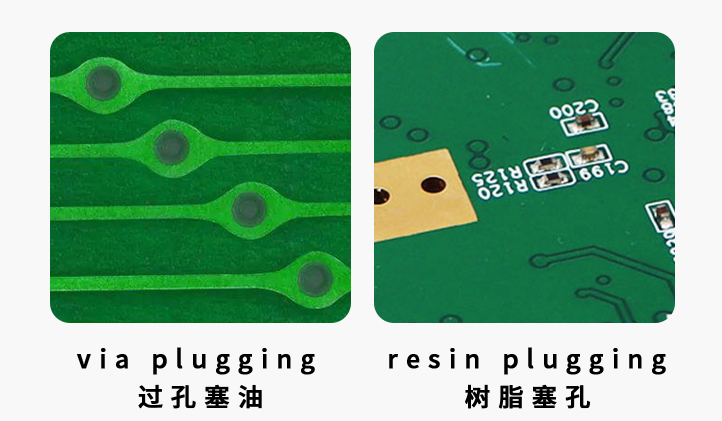The difference between resin plugging and via plugging with ink

In the PCB manufacturing process, both resin plugging and via plugging with solder mask ink are common via treatment methods. Their main goal is to seal the vias in order to improve reliability, solderability, and environmental resistance. Although both belong to the same category of via processing, they differ significantly in terms of materials, techniques, and applications. Let’s take a closer look at their differences.
First, let’s talk about the process. Via plugging with solder mask ink uses standard or special plugging ink to fill the vias (typically through-holes), and is usually done by screen printing or dispensing. In contrast, resin plugging uses high-performance epoxy resin to fill the vias (mainly for blind or buried vias), typically through vacuum injection or pressure filling. After filling, the resin-plugged vias often require copper plating to complete the conductive path.
Next, in terms of performance, there are notable differences. Because of the nature of the materials used, via plugging with ink tends to be less reliable. It can suffer from incomplete filling, voids, or air bubbles, and its thermal and mechanical strength is relatively limited. As a result, it's more commonly used in standard multilayer PCBs. On the other hand, resin plugging offers excellent performance in terms of reliability, filling integrity, heat resistance, and mechanical strength, making it ideal for high-frequency, high-speed, or high-end PCBs.
To sum up, the differences between resin plugging and via plugging mainly lie in the process, cost, reliability, and application scenarios. Despite these differences, the ultimate goal of both methods is the same: to optimize via structure and ensure stable performance of the PCB under demanding conditions.

